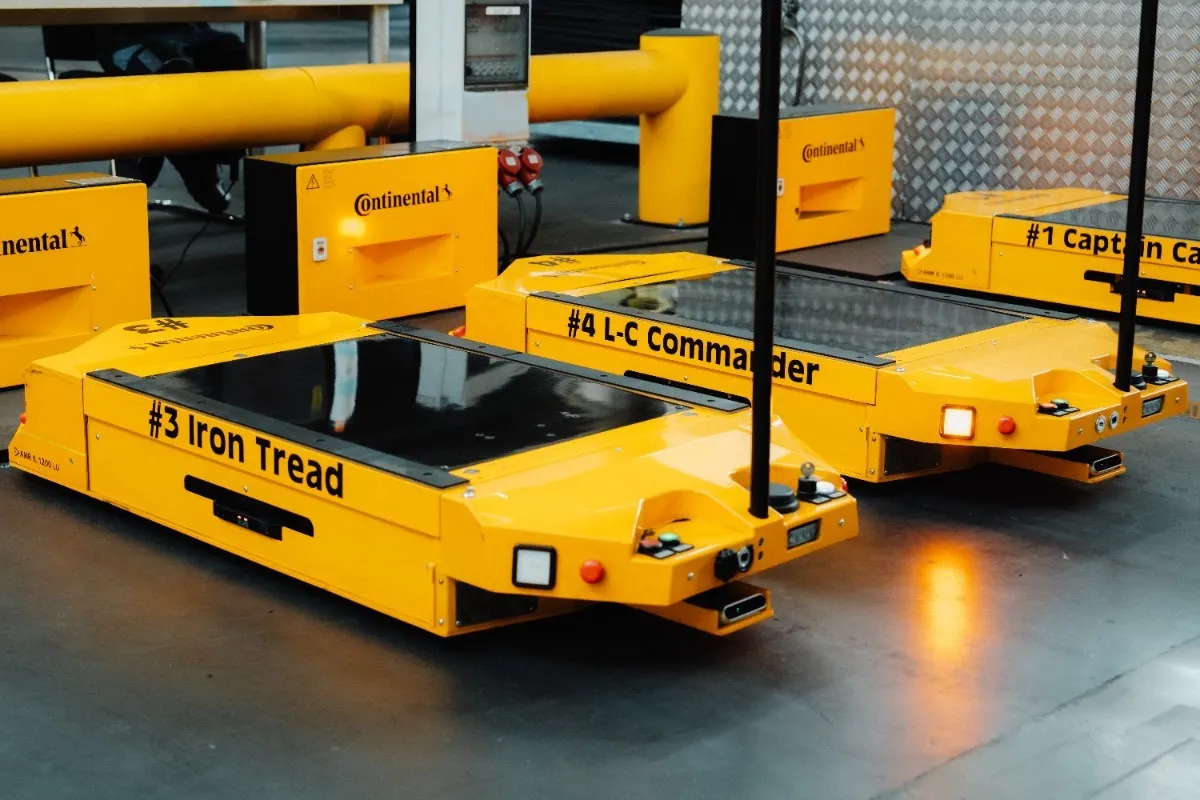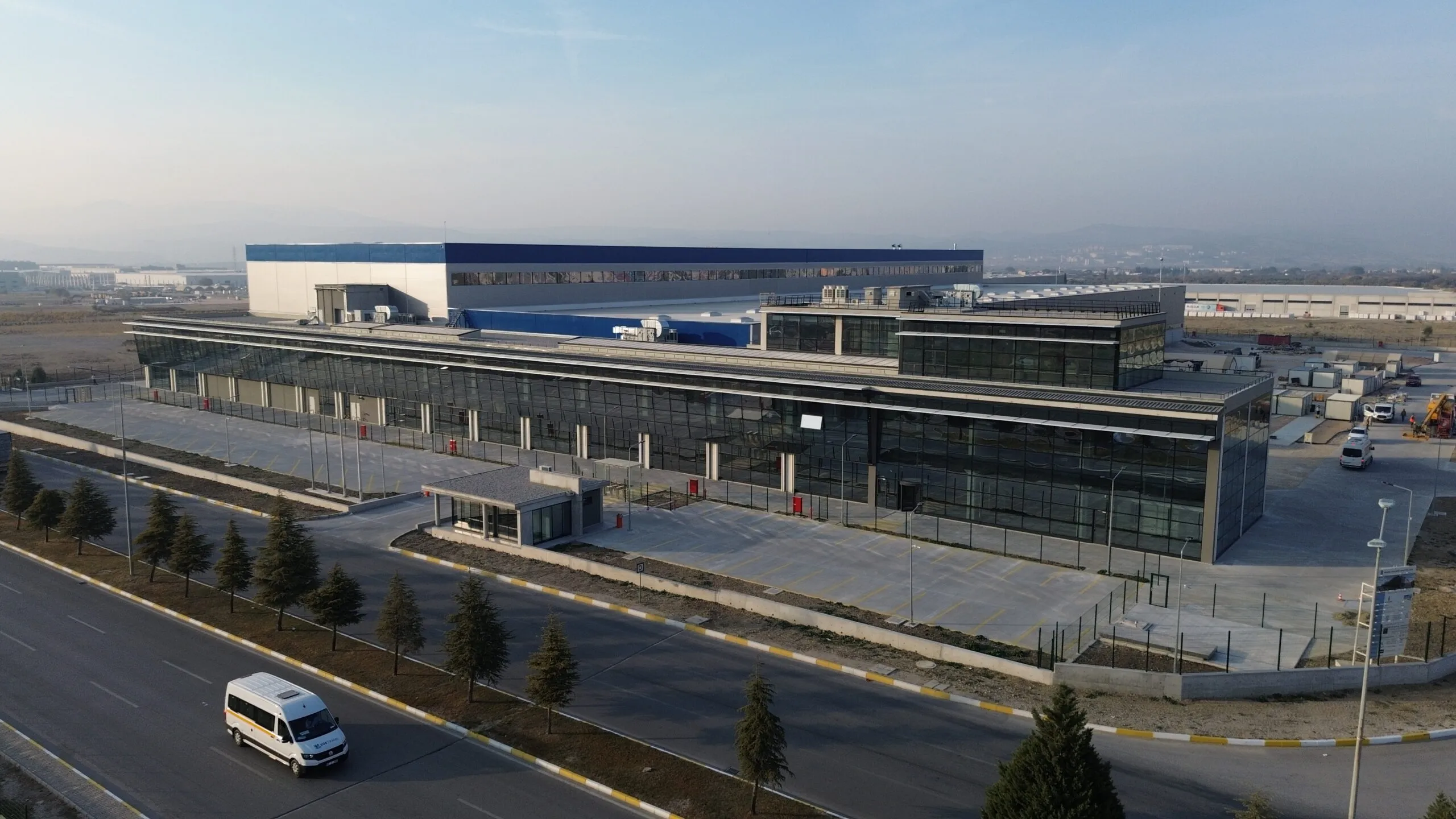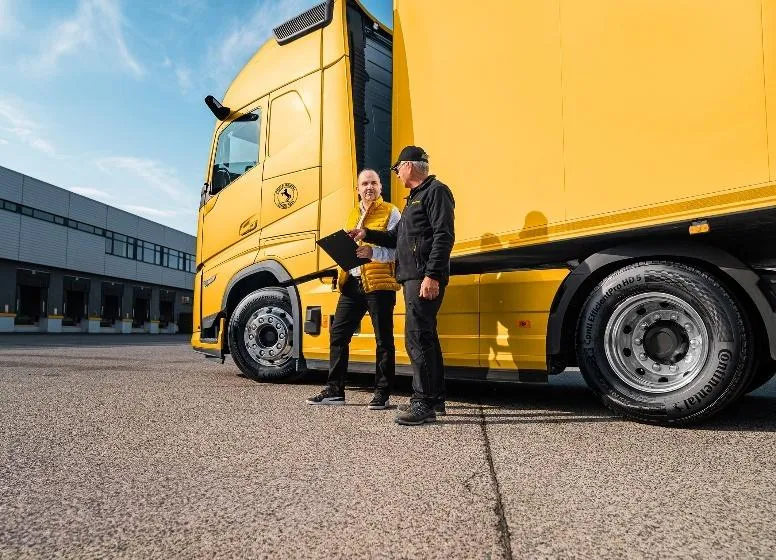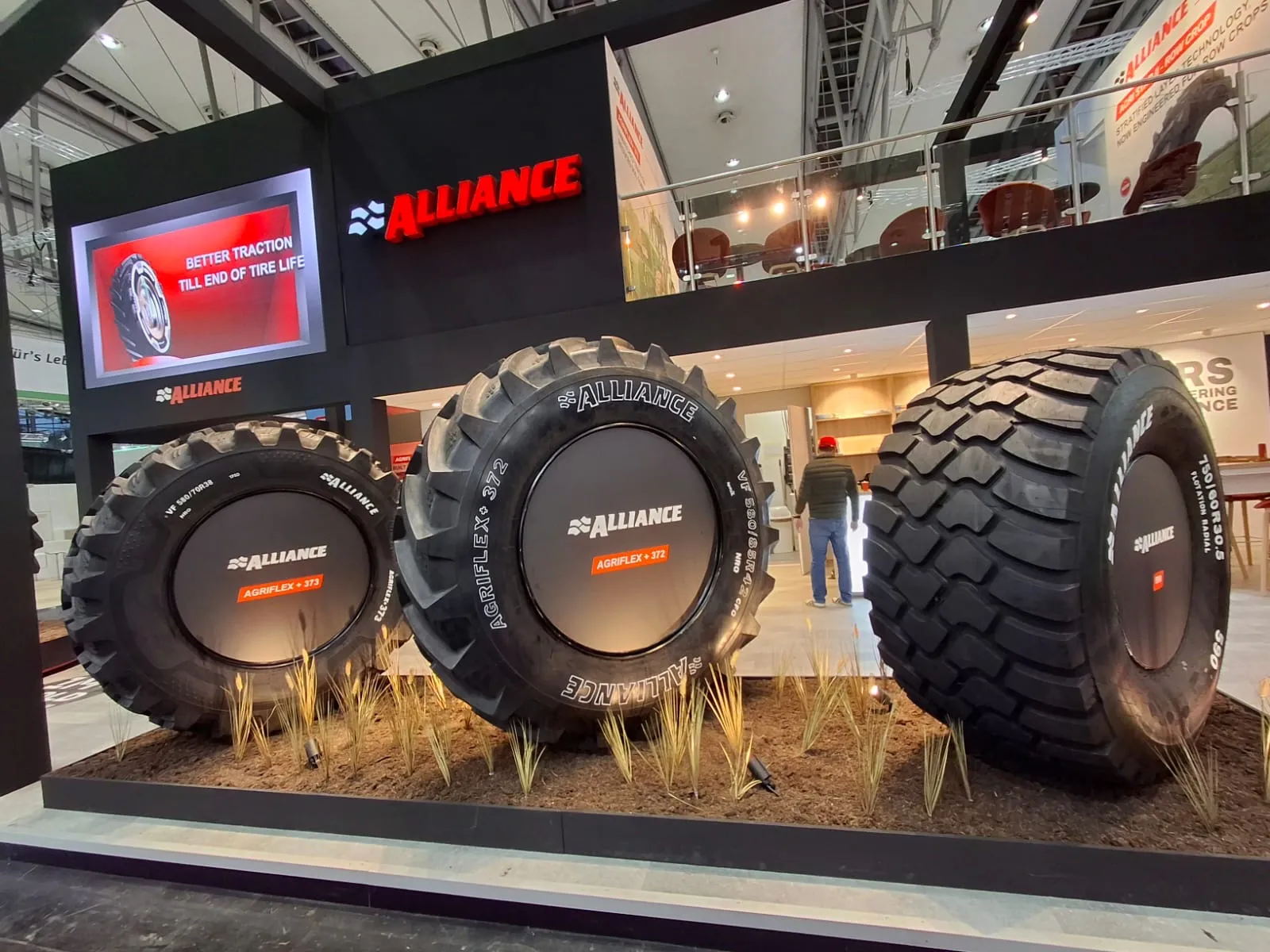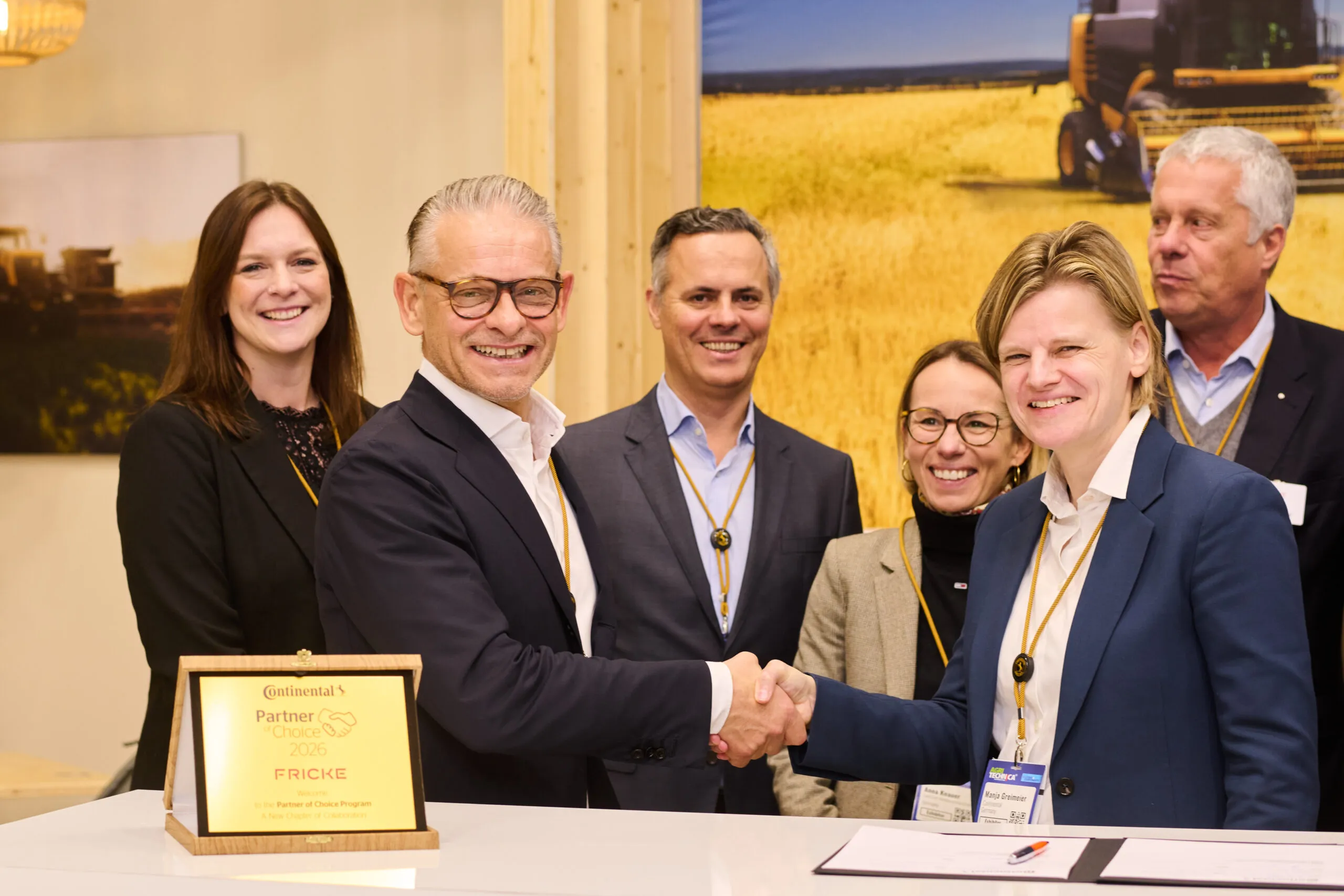At Continental’s ContiLifeCycle plant in Hanover-Stöcken, autonomous mobile robots (AMRs) have been handling in-plant transport of tyres since March 2025.
How Autonomous Robots Streamline Continental’s Retreading Process
At Continental’s ContiLifeCycle (CLC) retreading plant for truck and bus tyres in Hanover-Stöcken, seven autonomous mobile robots (AMRs) have been keeping things moving since March 2025.
Their job: transporting green tyres around the plant, freeing up employees for more skilled tasks such as machine setup and quality control. By successfully integrating smart automation, Continental is making manual production processes more ergonomic while further boosting efficiency in tyre manufacturing – a key step toward future-ready Industry 4.0.
“Self-driving robots have been supporting our production workflow for six months now,” said Felix Hantelmann, Head of the ContiLifeCycle plant.
“They handle simple, repetitive transport tasks such as moving a tyre from one point to another. The robots are directly connected to our digital order system, so they know exactly where to go and how to coordinate with each other to get there. They are a valuable addition to our daily operations and help create a safe, efficient and ergonomically optimised production environment.”
More Time for Quality: Autonomous Robots Streamline Tyre Production
The robots navigate independently and safely through the production hall using advanced sensors, 360-degree camera systems and AI-based control technology. At speeds of up to two metres per second – roughly the pace of a brisk walk – they transport tyres between stations in the retreading process: from the tyre-building machine to the curing presses and on to quality control.
The new hot-retreading workflow is as follows:
- A handling robot moves the buffed tyre carcass to the building machine, where up to 18 kg of rubber heated to about 100°C is added for the tread and sidewalls.
- After that, the robot places the tyre on a trolley. An autonomous mobile robot then takes the trolley to the curing press or to intermediate storage, depending on capacity.
- In the curing press, the 75-kg tyre is vulcanised at 160°C, forming its final shape and tread. It is then sent by conveyor belt to quality control.
Before the robots were introduced, employees transported tyres manually using cranes and trolleys that weighed up to 250 kilogrammes when loaded with two tyres. This required multiple manual steps and trips between stations.
“Our employees no longer have to carry tyres across the hall, which means less physical strain for them. Instead, they can focus on more demanding tasks like machine operation and quality control,” says Hantelmann.
Technology With Team Spirit: Employees Helping to Drive Change
Continental supported the rollout with a comprehensive training programme, which helped to boost acceptance among the workforce. Employees even named the robots, choosing titles such as Cargo Knight, Rubber Ranger and LifeCycle Commander. Six months later, the robots are an integral part of the team.
The use of autonomous mobile robots is a prime example of how Continental is leveraging digitalisation and automation to make tyre production more efficient and sustainable. And the success speaks for itself: Continental has introduced similar solutions at other tyre plants worldwide. Other locations include Mount Vernon and Clinton in North America, Púchov and Otrokovice in Europe, and Hefei and Rayong in Asia.
In the UK, for example, its dedicated retreading plant, ContiLifeCycle in Ivybridge, Devon, has been pioneering sustainable tyre production and recycling since initially opening its doors in 2016. At this flagship facility, the introduction of the Automated Build Cell (ABC) has already delivered significant efficiency gains across the plant, similar to those achieved at the Hanover-Stöcken site.
Advanced In-House Engineering Enhances Retreading Efficiency and Innovation
The process here uses state-of-the-art extrusion technology to precisely apply the new compound to both the tread and the sidewall of the prepared casing. The press then cures the tyre, completing the retread process. Impressively, the engineering team at Ivybridge designed and installed the ABC robot entirely in-house, showcasing the facility’s depth of technical expertise.
Tony Mailling, Head of Hot Retread Production EMEA at Continental Tyres and Plant Manager of ContiLifeCycle Ivybridge, explains, “Designing and installing the ABC robot entirely in-house has been a real achievement for our team. It not only visibly improves efficiency on the shop floor, but it also enhances consistency in production and demonstrates the strong expertise and innovative spirit we have at our facility.”
Recognising the importance of retread awareness, Continental has recently launched its impactful ‘Respect for Retreads’ campaign, designed to challenge outdated perceptions associated with remanufactured rubber.
More Than One Million Retreaded Tyres From the Contilifecycle Plant in Hanover
The CLC Stocken plant has been retreading worn truck and bus tyres since 2013. Technicians first thoroughly inspect the used tyres and strip them of their old tread. They then receive a new tread, are vulcanised to give them a new profile and finally undergo quality and safety checks. This process reuses up to 70% of the original tyre.
The result is a product that matches a new tyre in terms of safety and performance – while using significantly fewer resources. Since the plant in Hanover opened, Continental has retreaded more than one million tyres there. Including other retreading plants worldwide, the company has produced around eight million retreaded truck and bus tyres.

